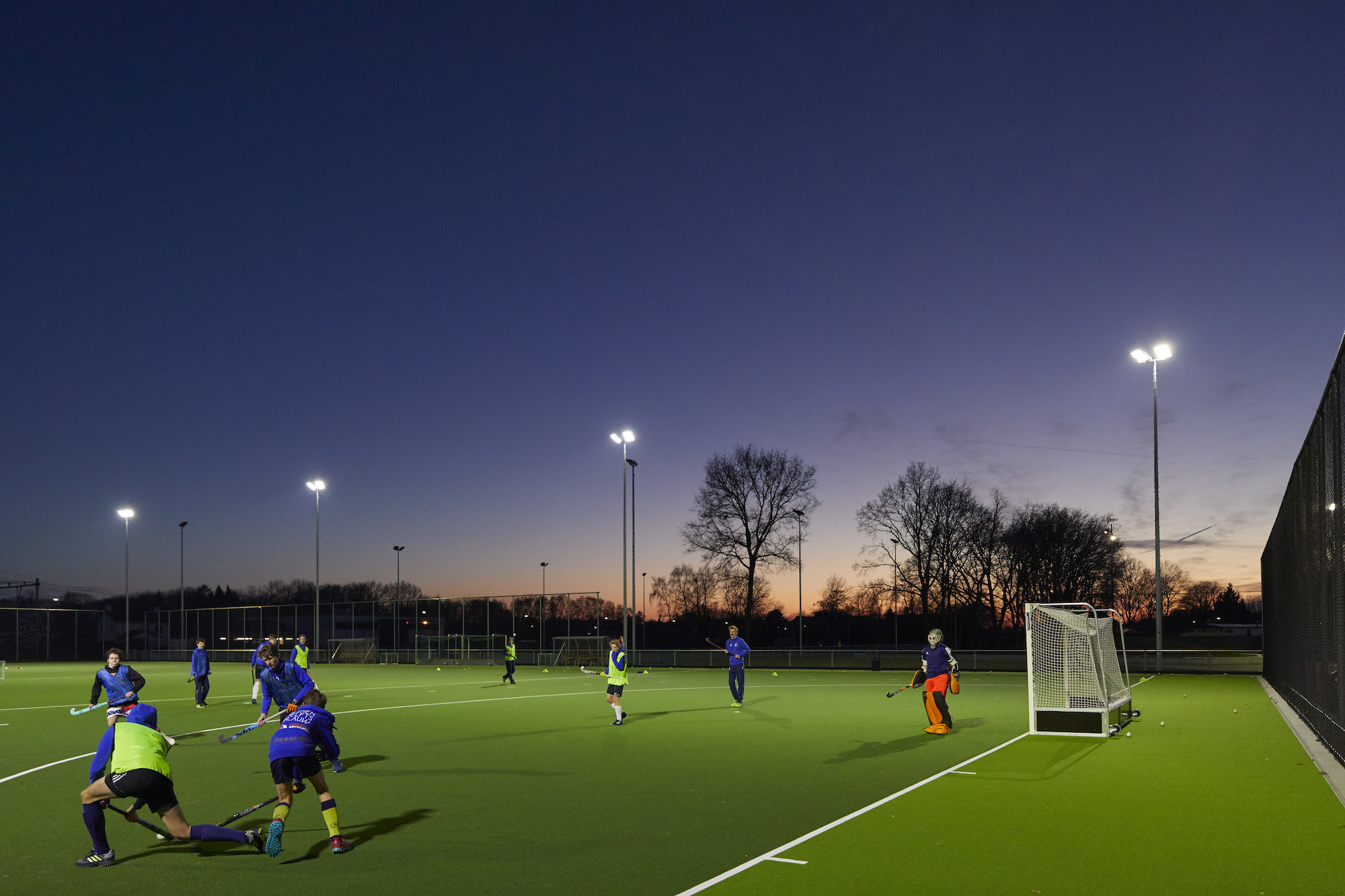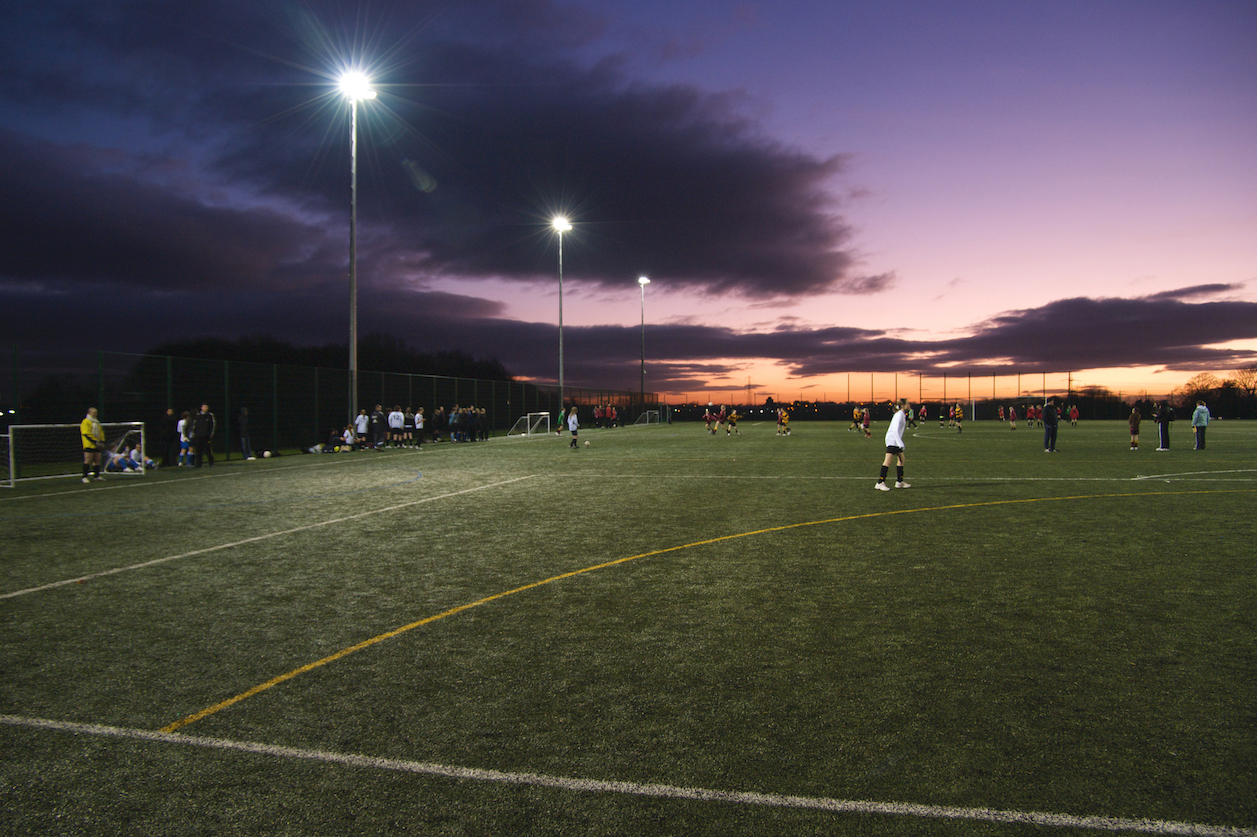As a facility manager for a sport court project, you must have been asked to replace old stadium lights for the football field, baseball fields, soccer field, or any other sports field or area and your thinking of converting to LED. So how good is LED? Is there enough power in today’s LED lights to upgrade your stadium lighting system. We think so, and we think there are other benefits that will make you conversion to LED beneficial to all involved. Here are the 3 main reasons we think you should start considering the switch over to LED for your stadium and sports lighting needs.
1. Massive Reduction in Energy Spend
Everybody knows that when you convert a 1000 Watt Metal Halide to a 400W Sport LED Light, there is an obvious reduction in energy spend. But actually the reduction on energy spend is far more than you think. The 1000 Watt Metal Halide actually consumes an additional 15% for the fixtures ballast. So instead of only consuming 1000 Watts, each light consumes 1150 watts. So there is an actual energy savings of 750 watts per fixture. That works out close to 66% energy saving per fixture, this ratio is even higher in reality since now there is a big development on LED lumen efficiency.
Well what does this all really mean? Well here are some real numbers to help you decide. Let’s say you meed install 140pcs LED Stadium Light in your project, you can chose 140pcs 1000W SOGA LED Stadium light or 140pcs 2500W Metal Halide, Normally clients need run them 200 days a year, 6 hours per day. Assume the cost of electricity is USD 0.13kw/h (some country and area is higher) . Savings for these lights would be USD 32760 per year. Of course, if your hours of use is higher, or cost of electricity is higher, the amount of savings would increase.

2. Cut Down on Your Maintenance Spend
Our clients get many calls from their potential end customers everyday, and each one has a different reason why they want to convert over to LED. Many are concerned about the ongoing cost of maintaining their current Metal Halide or High Pressure Sodium Bulbs. With bulbs lasting at most 20, 000 hours, and in a lot of cases, only 15,000 hours, getting rid of this maintenance juggernaut becomes a major reason they are looking to replace old stadium lights with LED.
But let’s look at the behavior of a Metal Halide Light over it’s lifetime. A metal Halide suffers significant lumen degradation quickly. It is quite common for a Metal Halide to lose 1/2 of its initial lumens within the first 7500 hours of life, or half life of the bulb. So at some point, as the bulb gets older, its effectiveness becomes limited, and it should be replaced, and that is probably well before the bulb had completely failed. It does not make sense to light a football field with metal halide bulbs that are 80% old. Even though the lights are still “on”, the field is dim. And even more so, even at 1/2 life, the bulbs should be replaced. Which makes maintaining stadium light or sport arena lighting systems a chore. And changing out bulbs in a stadium is not cheap. These lights are mounted high, as much as 100 feet in the air, so bringing in equipment and man power makes a bulb change an expensive proposition. So it may make sense to upgrade stadium lights to LED to eliminate this costly spend.
For the record, LED’s lumen degradation is significantly better than Metal Halide. Some of our systems still maintain 70% of their initial lumens even after 100,000 hours of use. So when you convert to LED, your days of maintaining Metal Halide bulbs will be done.

3. Always obtain the Higher Quality of Light, No One Ever Regretted Buying Quality
There’s a saying we like to discuss with our customers, you need less quantity when you have better quality. Let’s for a moment compare High Pressure Sodium Lighting to LED. If you look at the package the HPS bulb comes in, it lists an incredibly high initial lumens value for that bulb. What’s not listed is the bulbs Color Rendering Index (CRI). This index is a quality scale of the light source, a range between 0 and 100, with 100 being the best score you could achieve. With LED Light, it is rare for the CRI to be below 70, compared to HPS, whose score is less than 30. Even with Metal Halide, you would have to purchase specialized bulbs to match LED’s CRI color score.
So how does this all translate into light on the playing field? It’s simple, it makes everything appear sharper and brighter. Colors appear as they should, and are not discolored by the light source itself. And in the case of the HPS light, you have to compensate for the poor quality with more quantity. So our advice to you is to not just focus on the amount of lumens a bulb produces without completely understanding the quality of the light the bulb is able to create. And with LED, higher quality is a good thing!
So when it comes time to upgrade your stadium lights, LED has three basic advantages: reduction in energy consumed, reduced maintenance cost and a better quality of light.
LED vastly improves the quality of your sport fields and arenas. Not only do they create a higher standard in your facility, but they reduce the costs you are spending to light your areas on the back end as well. After all above reasons it’s time to upgrade to LED in your sports arena, I think you are well on your way to making the right and solidly informed decision when it comes down to purchasing your upgraded system.
SOGA lighting is devoted to give you the most proper Sports lighting solutions. With our professional Simulation engineer team. We offer one-stop service and always help our clients do an easier job. Please feel free to contact us now !
info@soga-lighting.com 24/7 hotline : +86(0)13510247405


